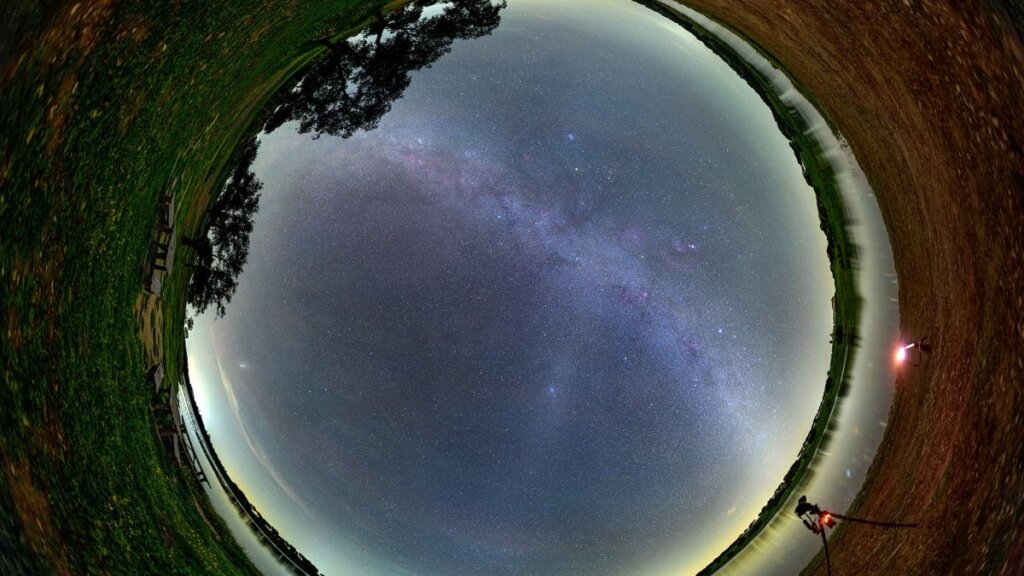
Green comet soars in stunning 3D image of the Milky Way (photo) (Image Credit: Space.com)
Miguel Claro is a professional photographer, author and science communicator based in Lisbon, Portugal, who creates spectacular images of the night sky. As a European Southern Observatory Photo Ambassador and member of The World At Night and the official astrophotographer of the Dark Sky Alqueva Reserve, he specializes in astronomical “Skyscapes” that connect both Earth and the night sky.
Join Miguel here as he takes us through his “Winter Milky Way, Zodiacal Light and Gegenschein with Comet ZTF” virtual reality experience.
An all-sky and 360-degree virtual reality scene features the path of zodiacal light, and the faint winter Milky Way presence full of nebula emissions and lovely bright constellations.
The Virtual Reality 360-degree experience in 7K resolution is visible using your desktop, or smartphone with gyroscope. A great “on location” experience can be achieved if you wear a VR glasses. You can vault into the scene below.
Related: Milky Way galaxy: Everything you need to know about our cosmic neighborhood
Read more: How to photograph the Milky Way: A guide for beginners and enthusiasts
Close to the zenith (center of the image) is a gegenschein, which is a bright spot opposite to where the sun is moving. These occur when the sun scatters interplanetary dust, causing the eerie glow.
Also in the scene is an outsider, a visitor known as the “green comet” C/2022 E3 (ZTF) that was shining with a diffuse greenish glow above Alqueva lake, at the Dark Sky Alqueva territory, in Portugal. Close to the horizon and almost surrounding the entire circular scene is the presence of a pale green airglow, just barely visible.

Looking for a telescope? We recommend the Celestron Astro Fi 102 as the top pick in our best beginner’s telescope guide.
For more virtual reality experiences in space, check out our recommended VR headsets. Ready to see the sky in real life? Check out our guides on the best telescopes and best binoculars. Don’t forget to also check out our guides on the best cameras for astrophotography and best lenses for astrophotography to get started.
To see more of Miguel Claro’s work, please see his website or follow his stories on Instagram at www.instagram.com/miguel_claro.
Editor’s Note: If you snap your own photos of the sky and would like to share them with Space.com’s readers, send your photo(s), comments, and your name and location to spacephotos@space.com.





